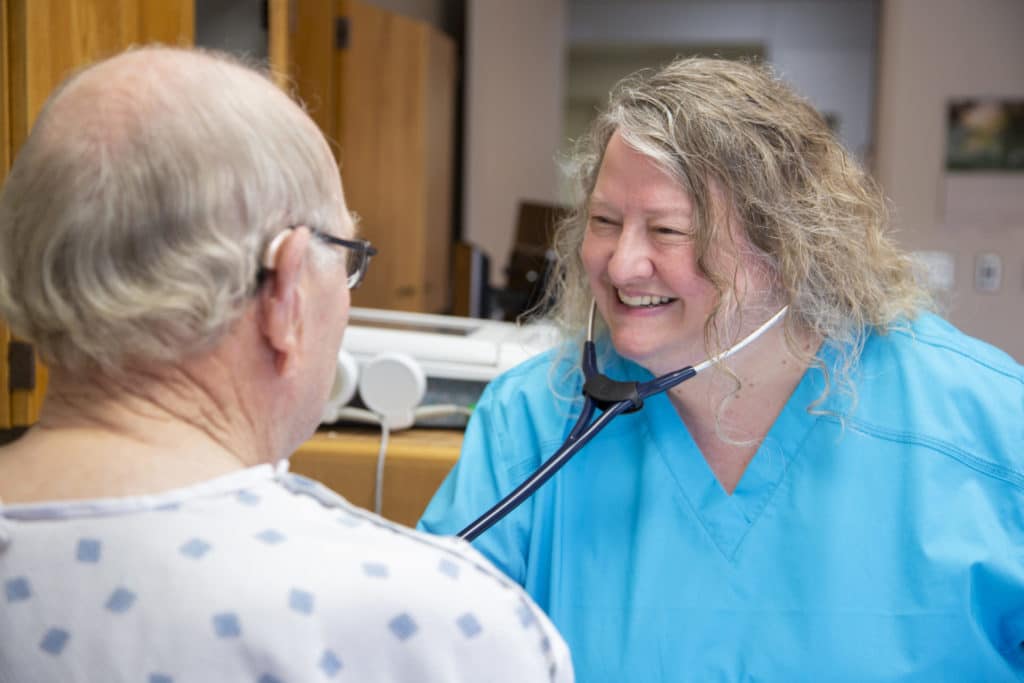“Respiratory Therapy is a specialized health care field where practitioners are trained in pulmonary medicine in order to work therapeutically with people suffering from pulmonary disease” as defined by the American Association for Respiratory Care (AARC).

National Respiratory Care Week, held in the last full week of October, recognizes the field of respiratory care and the respiratory therapists, along with other medical staff, who work with patients suffering from lung and breathing conditions. This week also promotes awareness of common lung diseases.
Respiratory Therapy is the medical field concerned with diagnosing, treating, and managing lung diseases and conditions. A Respiratory Therapist may offer a variety of treatments and practices, including, but not limited to:
- Conducting chest and breathing exams to determine lung function
- Diagnosing lung and breathing conditions and recommending treatment plans
- Suggesting medications via nebulizer or inhaler to treat chronic breathing problems
- Providing physiotherapies like chest tapping, breathing exercises and a pulmonary rehabilitation program
- Analyzing blood samples to determine oxygen levels
- Managing mechanical ventilators and other artificial airway devices
- Educating patients and families on lung conditions and treatment plans to improve the patient’s quality of life
When a person hears the term “lung disease” typically Asthma or COPD (chronic obstructive lung disease) comes to mind. These are a lot of times the two diseases that are talked about most. Lung disease is any problem in the lungs that prevents them from working properly.
Lung diseases are categorized as either:
- Airway diseases
- Lung tissue diseases
- Lung circulation diseases
Airway diseases affect the tubes (airways) that carry oxygen and other gases into and out of the lungs, thus causing a narrowing or blockage of the airways. When the airways become narrowed it makes it harder to breathe. It may feel as if you are trying to breathe through a straw. This would be a sign of an Obstructive lung disease. Some of the diseases may include Asthma, COPD and Bronchiectasis. Common symptoms to watch for would be:
- Shortness of breath or trouble breathing
- Feeling like you’re not getting enough air
- Decreased ability to exercise
- Cough that won’t go away or coughing up blood or mucus
- Pain or discomfort with breathing
Lung tissue diseases affect the structure of the lung tissue. Scarring or inflammation of the tissue makes the lungs unable to expand fully. It will be harder for the lungs to take in oxygen and get rid of carbon dioxide. You may not be able to breathe deeply or it may seem as if you are wearing a tight sweater or vest and your chest can only expand so far. This would be a sign of a Restrictive lung disease. Some of the diseases may include Pulmonary Fibrosis or Sarcoidosis. Common symptoms to watch for would be:
- Shortness of breath
- Dry cough
- Fatigue
- Unexplained weight loss
- Aching muscles and joints
Lung circulation diseases affect the blood vessels in the lungs. This could be caused by clotting, scarring or inflammation within the blood vessels. If this happens it will affect the ability of the lungs to take in oxygen and get rid of carbon dioxide. These circulation problems can also affect the function of the heart. A common symptom people may experience with these types of conditions is feeling very short of breath, especially when exerting themselves. A common lung circulation disease is Pulmonary Hypertension. Common symptoms to watch for would be:
- Shortness of breath, initially with exercise then eventually at rest
- Blue lips and skin (cyanosis)
- Chest pressure or pain
- Dizziness or fainting spells (syncope)
- Fast pulse or pounding heart beat (palpitations)
Lung diseases come in a variety of categories, can affect not only the lungs but the heart and other major organs within the body, and affect the youngest and the oldest of patients.
If you feel as if your breathing “just isn’t right” please reach out to your primary care provider and visit about your symptoms and concerns. Breathing is the facts of life and you need to protect every breath. If you have questions or would like to learn more about Respiratory Care Services at Windom Area Health, call 507-831-0647.
By Rhonda Wahl, RRT, Respiratory Therapy Coordinator
